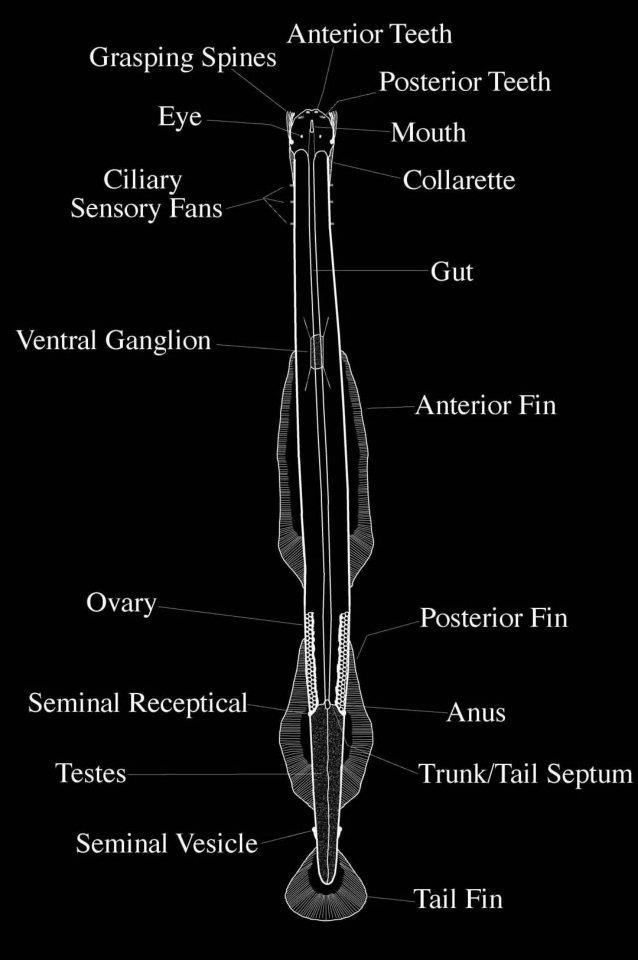Identification Resources
There are various resources available on the internet for
those who are trying to identify a particular species of chaetognath (MSIP, SERTC 2011). Although most
of these resources are tailored for specific areas (e.g. Gulf of Mexico), they do give a general idea of what the
species in question may be.
Most identification keys start off by asking questions about
the external anatomy, such as:
- How many pairs of fins does the specimen have: 1 or 2?
- What is the shape of the caudal fin?
- Are the anterior and posterior fins connected?
- Are the seminal vesicles located equal distances between the posterior fin and caudal fin, or closer to the caudal fin?
- Does the specimen have a collarette?
- How many grasping spines does the specimen have? Are they serrated or smooth?
- How big is the tail section in relation to the trunk section and total body length?
However, in most cases it is necessary to utilise internal anatomy to definitively identify a species. These may include answering such questions such as:
- Do the lateral fins begin in line with, or below the ventral ganglion?
- Are the ovaries short and broad, or long and narrow?
- How far into the trunk section do the ovaries extend?
-

Annotated diagram of a generalised chaetognath. Courtesy of Erik Thuesen.
|